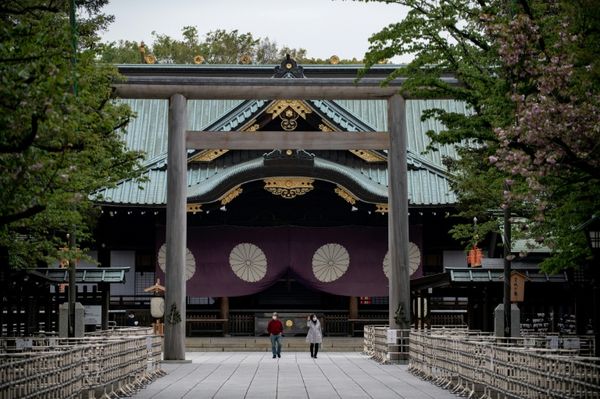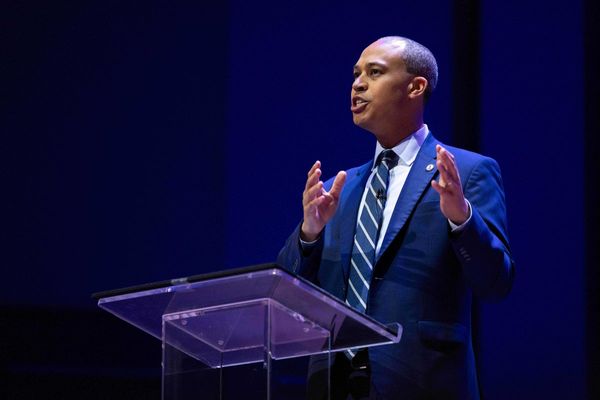
April 6 marks 30 years since the start of the Bosnian War, an international armed conflict that lasted from 1992 to 1995 and saw the ethnic cleansing of Bosniaks.
According to an analysis by the International Criminal Tribunal for the Former Yugoslavia (ICTY), more than 100,000 people were killed during the Bosnian War, and at least 70 percent of them were Bosniaks.
Following Bosnia’s recognition as an independent state in 1992, Bosnian Serbs backed by Serbia’s president, Slobodan Milosevic, began a campaign to ethnically cleanse the Bosnian territory.
More than two million people became refugees during the conflict, according to the United Nations Commission on Human Rights (UNHCR).

The breakup of Yugoslavia
Yugoslavia was formed after World War I, comprising six Slavic groups with the official language being Serbo-Croatian.
During World War II, the Socialist Federal Republic of Yugoslavia was founded – a federation subdivided along ethnic lines to include six republics – Bosnia and Herzegovina, Croatia, Macedonia, Montenegro, Serbia and Slovenia.
The republic was under the control of communist leader Josip Broz Tito from 1944 until his death in 1980. Following Tito’s death, ethnonationalist tensions began to rise as the republics edged away from each other.
In 1991, Slovenia and Croatia declared their independence from Yugoslavia – this would be the start of the state’s disintegration. In 1992, Macedonia followed suit.
On March 1, 1992, Bosnia and Herzegovina held an independence referendum in which 99.7 percent of people, with a 63.4 percent turnout, voted in favour of separating from Yugoslavia. Bosnian Serbs wanted to remain part of Yugoslavia and boycotted the vote.

Bosnia’s move towards independence was driven by Serbia’s aggressive separatist policies, in which Milosevic planned to unify Bosnian and Croatian Serb territories. In Bosnia, the Serb Autonomous Oblast (SAO), a governing unit, had already been set up by secessionist Serbs in Croatia and Bosnia in the early 1990s.
In April 1992, the United States and the European Economic Community recognised Bosnia as an independent state. Following the recognition, Bosnian Serb forces began an attack on Sarajevo.
In early April 1992, Bosnian Serb forces started what was to become the longest city siege in modern warfare at the time. Bosnian Serb fighters backed by the Yugoslav army cut off the city’s electricity and water in a 43-month siege. From 1992 to 1995, 11,000 people were killed in Sarajevo.
Key players in the Bosnian War
Ethnonationalism played a big role in the Bosnian War, with Serbia and Croatia violating Bosnia’s borders to advance their nationalist agendas.
A UN embargo on arms sales to the whole of the Yugoslav federation was put in place by the Security Council in 1991, leaving the Bosnians defenceless against Serbian and Croatian aggressors. Serbia, on the other hand, had inherited military infrastructure and arms from the JNA (Yugoslav People’s Army) – the fourth-strongest army in Europe at the time.

Here are some of the key players during the Bosnian War:
Slobodan Milosevic – Serbia’s president was the most influential figure during the Bosnian War and Balkan conflicts during the 1990s. Milosevic played a crucial role in driving ethnic tensions in the region.
Alija Izetbegovic – Bosnia’s first president led the country to independence in the 1992 referendum. He was one of the three leaders who negotiated the 1995 Dayton peace accords.
Franjo Tudjman – Croatia’s nationalist leader was a key participant in the “joint criminal enterprise” to ethnically cleanse Bosniaks, supported Bosnian Croats during the Bosnian war and also negotiated a peace agreement during the Dayton accords.
Radovan Karadzic – the leader of the Bosnian Serbs was responsible for the massacre that unfolded in Srebrenica. Following the war, Karadzic went underground before being arrested in 2008.
Ratko Mladic – Bosnian Serb military leader known as the “Butcher of Bosnia”, Mladic commanded the Bosnian Serb army during the conflict. Along with Karadzic, he was responsible for planning the Srebrenica genocide.
Radislav Krstic – Bosnian Serb commander was involved in the killing of Bosniaks.
Timeline of key events during the war

1992:
March 1 – Bosniaks and Bosniak Croats vote for independence from Yugoslavia.
April 4-5 – The siege of Sarajevo begins under the leadership of Radovan Karadzic.
April 6 – The European Community recognises Bosnia’s independence.
May – The UN imposes sanctions on Serbia for backing rebels in Bosnia and Croatia.
October – Croat forces carry out a surprise attack on Bosniaks in the municipality of Prozor, marking the beginning of the Croat-Bosniak war in Bosnia, often referred to as a war within a war.

1993:
January – Peace efforts fail in Bosnia.
April 16 – The UN declares Srebrenica a safe area under the protection of the UN Protection Force. Troops are deployed, however, the town is cut off with only a few humanitarian convoys reaching the area.
May 6 – The UN includes the cities of Sarajevo, Zepa, Gorazde, Tuzla and Bihac in the safe zones.
1994:
March – The US leads an agreement that ends the Bosniak-Croat war and results in a federation.
1995:
March – Radovan Karadzic, leader of the Bosnian Serbs, orders Srebrenica and Zepa to be cut off completely and aid envoys to be stopped from reaching those areas.
July 9 – Karadzic issues an order to overtake Srebrenica.
July 11 – Under the command of General Ratko Mladic, Serb forces capture Srebrenica and systematically kill more than 8,000 Bosniak men and boys. This is later ruled a genocide by the international courts in The Hague in 2005. Bosniak women and girls were mass raped.

November 21 – Following air attacks, Bosniak President Alija Izetbegovic, Croatian President Franjo Tudjman and Serbian President Slobodan Milosevic agree to a deal brokered by the US.
December 14 – The Dayton peace accords are signed in Paris. The agreement divided the country into two administrative entities: the Federation of Bosnia and Herzegovina, with a predominantly Bosniak and Croat population, and the entity of “Republika Srpska” (Serbian Republic) with a majority Serb population – seen by some as a direct result of ethnic cleansing.

Charged with war crimes
In 1993, the International Criminal Tribunal of the former Yugoslavia (ICTY) was set up by the UN to deal with the war crimes committed during the conflicts in the Balkans. The tribunal lasted 24 years, from 1993 to 2017.
Witnesses and victims provided evidence of the atrocities of the war in which 161 individuals were indicted – 90 were sentenced, 19 acquitted, 20 had their indictments withdrawn, 17 died before conviction, 13 were referred to other courts, and two were retried.
Four types of crime were recorded at the tribunal – genocide, crimes against humanity, violations of laws/customs of war and grave breaches of the Geneva Convention.
Among the people tried by the tribunal were:
Slobodan Milosevic – proceedings terminated in 2006 following his death.
Radovan Karadzic – sentenced to life imprisonment for war crimes, crimes against humanity and committing genocide.
Ratko Mladic – sentenced to life imprisonment for crimes against humanity and committing genocide.
On February 26, 2007, the International Court of Justice (ICJ) formally recognised the massacre in Srebrenica as a genocide. In June of the same year, survivors and family members of victims of Srebrenica filed a complaint against the UN and the Netherlands for failing to protect civilians in Srebrenica and failing to report war crimes.
On June 27, 2017, the Hague Court of Appeal ruled that the Dutch government was partly responsible for the deaths of 350 Bosniak men and boys during the Srebrenica genocide.








